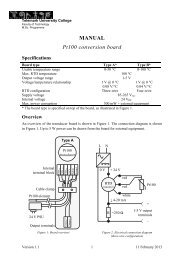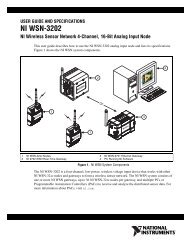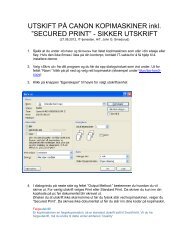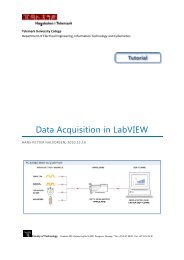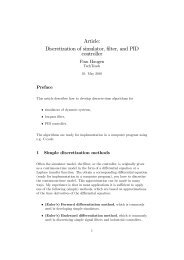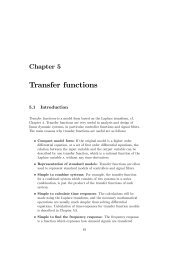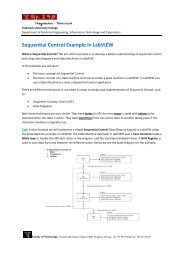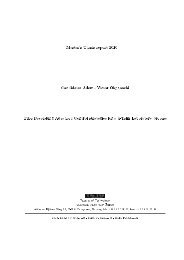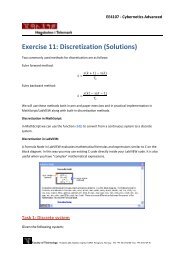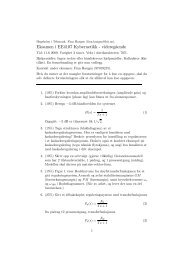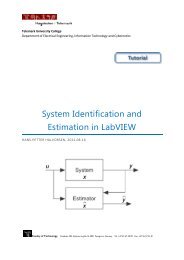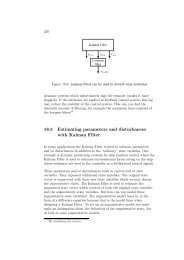State estimation with Kalman Filter
State estimation with Kalman Filter
State estimation with Kalman Filter
Create successful ePaper yourself
Turn your PDF publications into a flip-book with our unique Google optimized e-Paper software.
F. Haugen: Kompendium for Kyb. 2 ved Høgskolen i Oslo 107<br />
• G is the process noise gain matrix relating the process noise to the<br />
state variables. It is common to assume that q = n, makingG square:<br />
⎡<br />
⎤<br />
G 11 0 0 0<br />
0 G 22 0 0<br />
G = ⎢<br />
⎣<br />
.<br />
0 0 ..<br />
⎥<br />
(8.24)<br />
0 ⎦<br />
0 0 0 Q nn<br />
In addition it is common to set the elements of G equal to one:<br />
making G an identity matrix:<br />
⎡<br />
G = ⎢<br />
⎣<br />
G ii =1 (8.25)<br />
1 0 0 0<br />
0 1 0 0<br />
0 0 . . . 0<br />
0 0 0 1<br />
⎤<br />
⎥<br />
⎦ = I n (8.26)<br />
• y is the measurement vector of r measurement variables:<br />
⎡ ⎤<br />
y 1<br />
y 2<br />
y = ⎢ ⎥<br />
⎣ . ⎦<br />
y r<br />
(8.27)<br />
• g is the measurement vector function:<br />
⎡<br />
g 1 ()<br />
g 2 ()<br />
g = ⎢<br />
⎣ .<br />
g r ()<br />
⎤<br />
⎥<br />
⎦<br />
(8.28)<br />
where g i () is any nonlinear or linear function. Typically, g is a linear<br />
function on the form<br />
g(x) =Cx (8.29)<br />
where C is the measurement gain matrix.<br />
• H is a gain matrix relating the disturbances directly to the<br />
measurements (there will in addition be an indirect relation because<br />
the disturbances acts on the states, and some of the states are<br />
measured). It is however common to assume that H is a zero matrix<br />
of dimension (r × q):<br />
⎡<br />
⎤<br />
0 0 0 0<br />
⎢<br />
H = ⎣<br />
.<br />
0 0 ..<br />
⎥<br />
. ⎦ (8.30)<br />
0 0 ··· H rq



